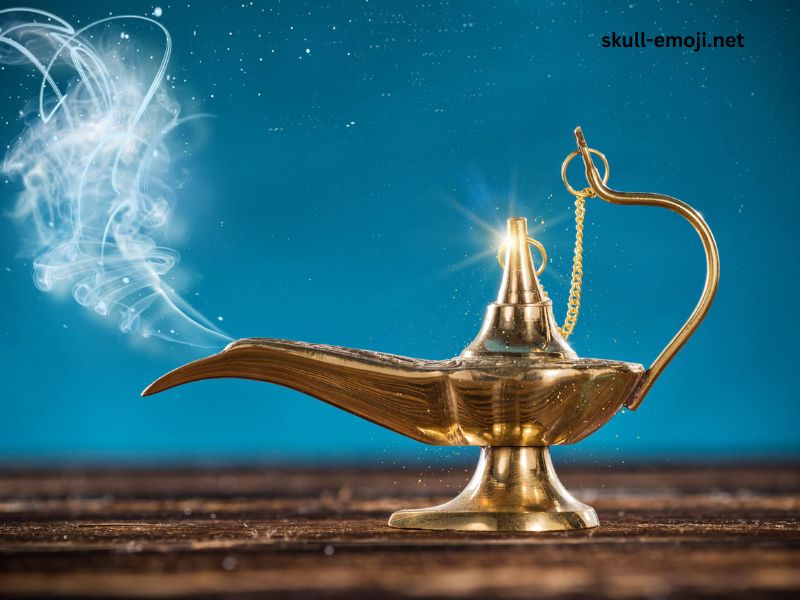The phrase “Genie in a Bottle” is widely recognized, especially thanks to the 1999 hit pop song by Christina Aguilera, which brought the concept into mainstream consciousness. However, the metaphor of a genie trapped inside a bottle has deep cultural, psychological, and symbolic connotations that go far beyond the catchy lyrics of a pop song. This metaphor draws on a range of mythological, literary, and psychological interpretations, each offering a unique perspective on human desires, liberation, and the complexities of self-control and release.
In this article, we’ll delve into the many meanings behind the concept of a “Genie in a Bottle,” exploring its historical origins, psychological implications, and its relevance in modern culture. We’ll also examine how the metaphor is used in literature, pop culture, and the broader social context.
The Origins of the Genie Myth
The idea of a genie, or “djinn,” comes from pre-Islamic Arabian mythology, where they were considered powerful and often mischievous spirits that could shape-shift and interact with humans. In ancient cultures, the term “djinn” referred to a variety of supernatural beings, many of whom were believed to live in remote or hidden places, such as deserts, mountains, and dark caves. They were both feared and revered, often thought to have the power to grant wishes but also to cause harm if angered.
The concept of a genie granting wishes became popular in Western literature largely due to “One Thousand and One Nights” (also known as “Arabian Nights”), a collection of Middle Eastern folktales compiled during the Islamic Golden Age. In stories like “The Fisherman and the Genie,” the genie is often depicted as being trapped inside a bottle or lamp, only to be freed by a human who releases the spirit. Once free, the genie typically offers to grant the human three wishes, though these wishes often come with unintended consequences, teaching the characters important lessons about greed, desires, and the limitations of human control.
The image of the genie emerging from a bottle or lamp has since become ingrained in global folklore and pop culture, with the genie becoming a symbol of both boundless potential and the complexities of human desires.
The Meaning of a “Genie in a Bottle”
The phrase “Genie in a Bottle” has several layers of meaning that can be interpreted in various contexts. While it may evoke thoughts of magic and fantasy, it also has rich metaphorical significance that touches on themes of control, freedom, sexuality, and the tension between restraint and release.
-
Desire and the Constraints of Society
At its core, a “Genie in a Bottle” can be seen as a symbol of suppressed desires. Much like the genie who is trapped within the confines of a bottle, individuals often experience their desires, whether they be emotional, sexual, or personal, as something they cannot express freely. Society, with its norms, rules, and expectations, frequently places limitations on how people can pursue or express their desires. This creates a sense of internal conflict, where a person’s true self or their deeper needs are kept hidden or repressed.
In Christina Aguilera’s song, for example, the protagonist sings about being “a genie in a bottle,” implying that she is a person of deep emotional or sensual potential, but she is constrained by societal norms or expectations. The phrase “You gotta rub me the right way” suggests that the “genie” will not be released unless the right conditions are met, which could symbolize how a person’s desires may only be revealed when they feel safe, understood, or respected.
The bottle, in this sense, can be understood as a metaphor for the emotional or social barriers that prevent a person from fully expressing their authentic self. The “rubbing” could represent the act of unlocking these desires in the right context, where the person feels empowered to be themselves without fear of judgment or retribution.
-
Sexuality and Liberation
In popular culture, the “Genie in a Bottle” metaphor often relates to sexual liberation and the complex dynamics of desire, intimacy, and consent. Aguilera’s song, while catchy and playful, is laden with sexual undertones, where the genie symbolizes a person with sensual or erotic potential, and the bottle represents the containment or restraint of that energy.
The act of “rubbing the bottle the right way” can be seen as a metaphor for navigating the complexities of attraction and intimacy. It suggests that sexual desires, like the genie, are not something that can be forced or rushed—they must be approached with respect, understanding, and the right kind of attention. This echoes broader cultural conversations about consent, boundaries, and mutual respect in relationships, where the key to unlocking deep emotional and physical connections lies in trust and communication.
On a deeper level, the “Genie in a Bottle” also explores the tension between innocence and experience. The bottle could represent the societal pressure to maintain an image of purity or restraint, while the genie is the wild, untamed aspect of one’s sexual or emotional nature. The act of releasing the genie can thus symbolize a person coming into their own power, shedding external expectations, and embracing their full range of desires.
-
The Psychological Concept of Repression
From a psychological standpoint, the “Genie in a Bottle” can be interpreted through the lens of Freudian theory, particularly the concept of repression. Sigmund Freud posited that repressed desires and emotions, especially those related to sexuality and personal identity, are stored in the unconscious mind. Just as the genie is trapped within the bottle, these repressed aspects of the self are kept hidden from consciousness.
The release of the genie, therefore, represents the process of bringing these repressed desires or emotions into awareness, allowing for personal growth and self-actualization. This release can be liberating but also risky, as the genie—like the unconscious mind—may bring with it unpredictable consequences. The genie’s power, once unleashed, may not always be easy to control, mirroring the human psyche’s complexity and the challenges involved in confronting repressed feelings.
-
The Power of Choice and Consequences
One of the most enduring themes in the genie myth is the idea of choice and consequence. In many stories, when the genie is released, it grants three wishes to the person who freed it. However, these wishes often come with unintended consequences that teach the wish-maker valuable lessons about greed, ambition, and the nature of desire.
This aspect of the genie metaphor has profound implications when applied to human life. In the context of the “Genie in a Bottle,” it reflects the idea that the act of releasing suppressed desires or emotions—whether they be in the form of personal ambitions, relationship desires, or career goals—can come with unforeseen consequences. It serves as a reminder that freedom and liberation are not without risk, and that our desires must be approached with wisdom and caution.
In this way, the metaphor emphasizes the importance of mindfulness in how we approach our desires and the ways in which we choose to navigate the challenges of life. The act of rubbing the bottle “the right way” implies that we must approach our desires with care, respect, and a sense of responsibility.
The Genie in a Bottle in Pop Culture and Society
The metaphor of the “Genie in a Bottle” has been used in various ways throughout popular culture, including films, television shows, music, and literature. Christina Aguilera’s song, as mentioned, is one of the most iconic uses of the metaphor, but it’s far from the only one. The figure of the genie—especially the idea of a trapped, powerful being—has appeared in countless works of fiction, often to explore themes of freedom, restraint, and desire.
In the 1992 Disney film Aladdin, the genie (voiced by Robin Williams) is another famous interpretation of this mythical figure. While the genie in Aladdin is comedic and friendly, the underlying message remains the same: liberation comes at a cost, and the consequences of wishes—especially those driven by selfish motives—can be unpredictable. The film echoes the same themes found in older genie stories, such as the need to consider the consequences of our actions and the complexities of desire.
On a broader cultural level, the concept of the “Genie in a Bottle” is often used to discuss the tension between control and freedom in human life. In today’s fast-paced, consumer-driven society, many people find themselves trapped in metaphorical bottles—whether by societal expectations, work pressures, or personal insecurities—and the challenge becomes how to release the genie, or, in other words, how to break free from these constraints and live authentically.
Conclusion
The “Genie in a Bottle” is more than just a metaphor for repressed sexuality or desire. It’s a symbol of the inner potential that lies within all of us—potential that, when carefully and consciously released, can lead to profound personal growth, creativity, and freedom. However, the genie is also a reminder that desires, once unleashed, can have unintended consequences. The key is to find balance: to navigate the complexities of desire with respect, mindfulness, and a sense of responsibility.
Whether through the lens of mythology, psychology, or pop culture, the metaphor of the “Genie in a Bottle” invites us to reflect on the ways in which we contain, control, and release our deepest desires and aspirations. Ultimately, it asks us to consider the question: How can we honor our inner genies without letting them escape into chaos? The answer lies in the delicate art of liberation, one that requires both courage and wisdom.



